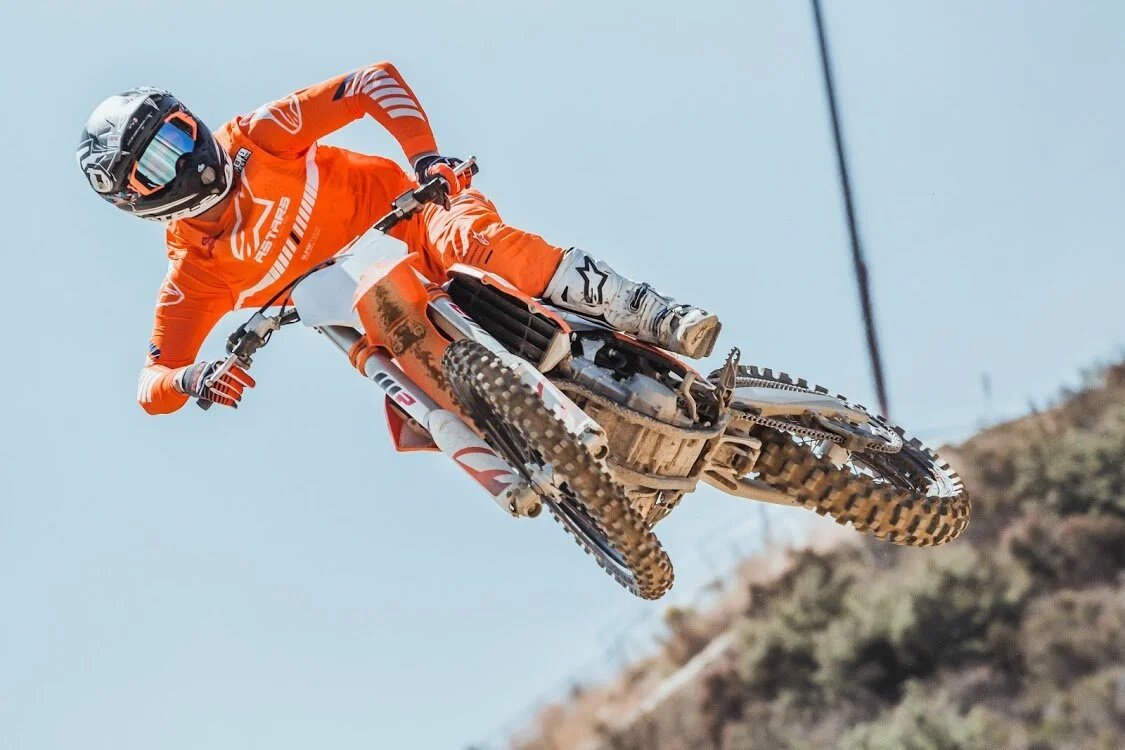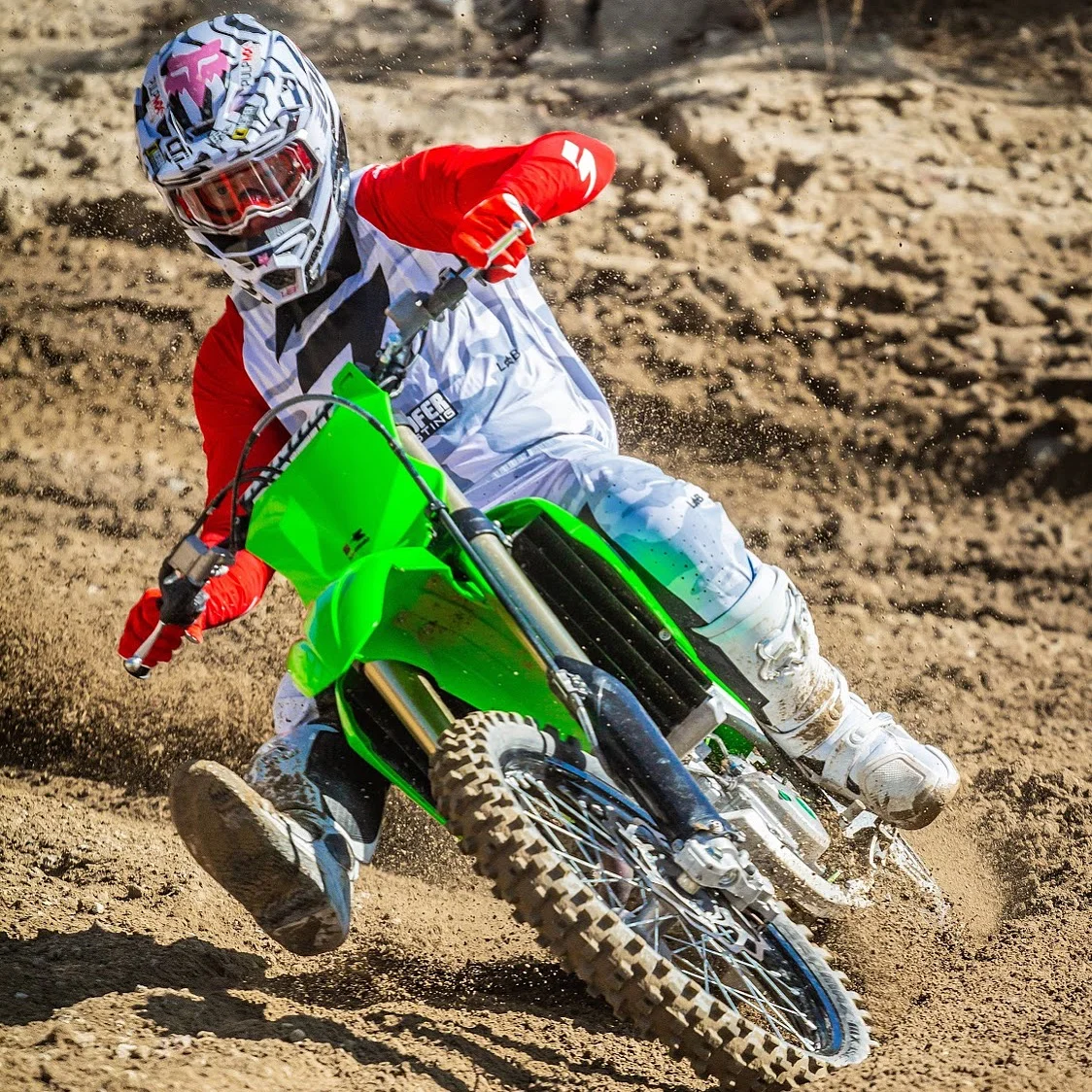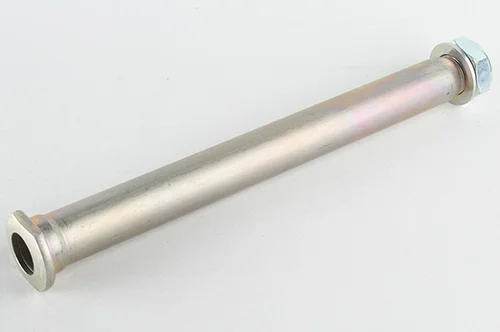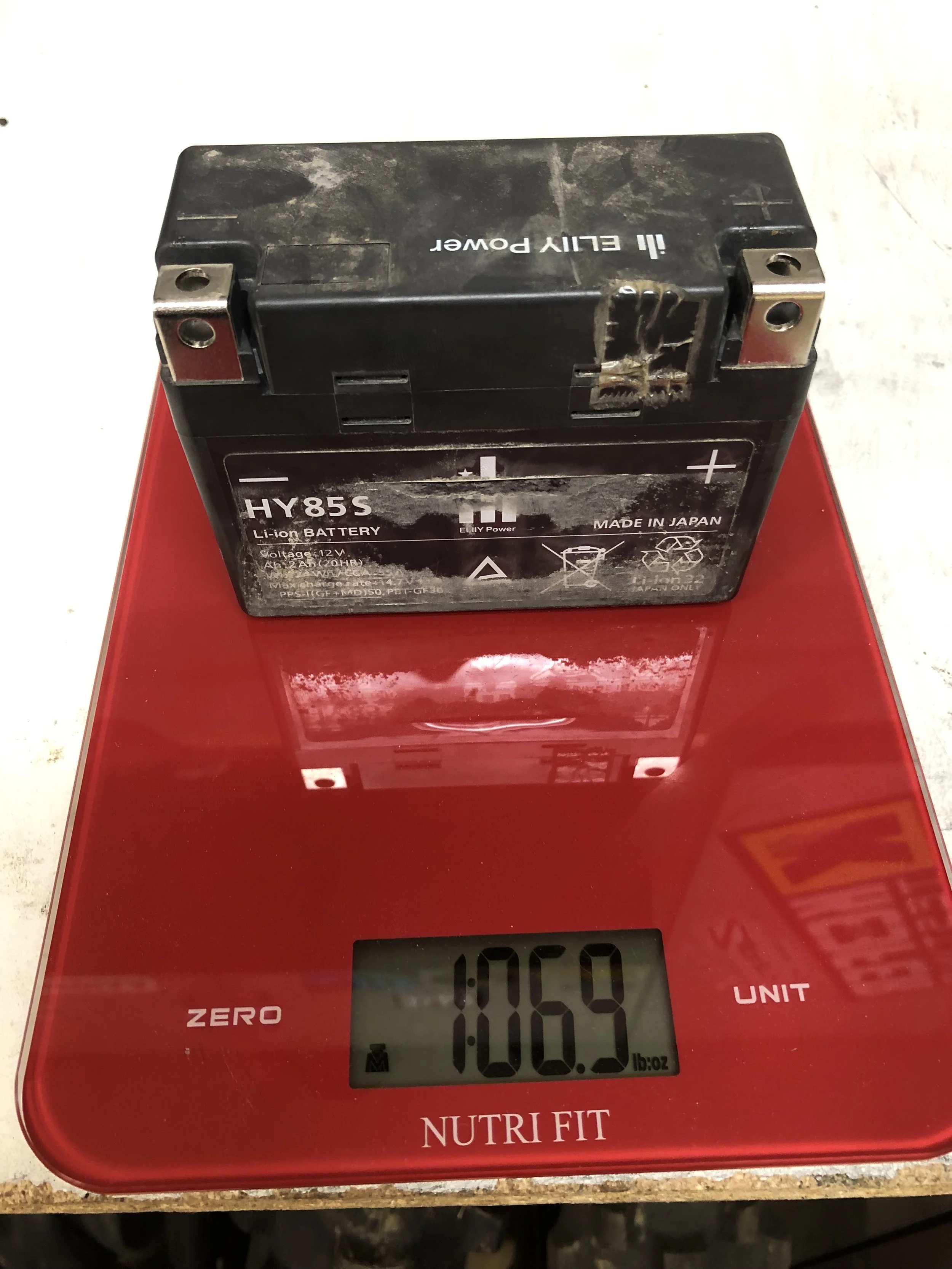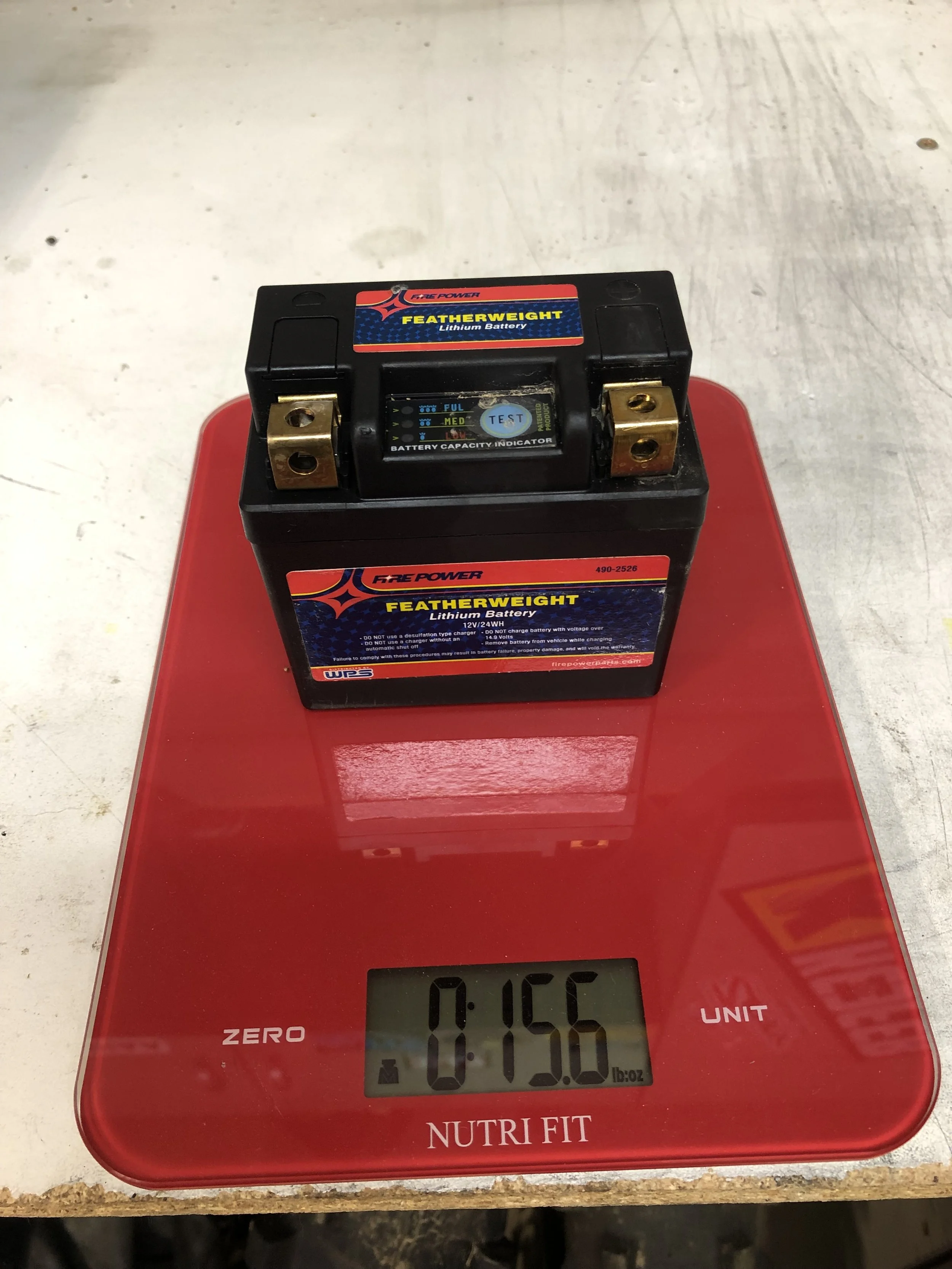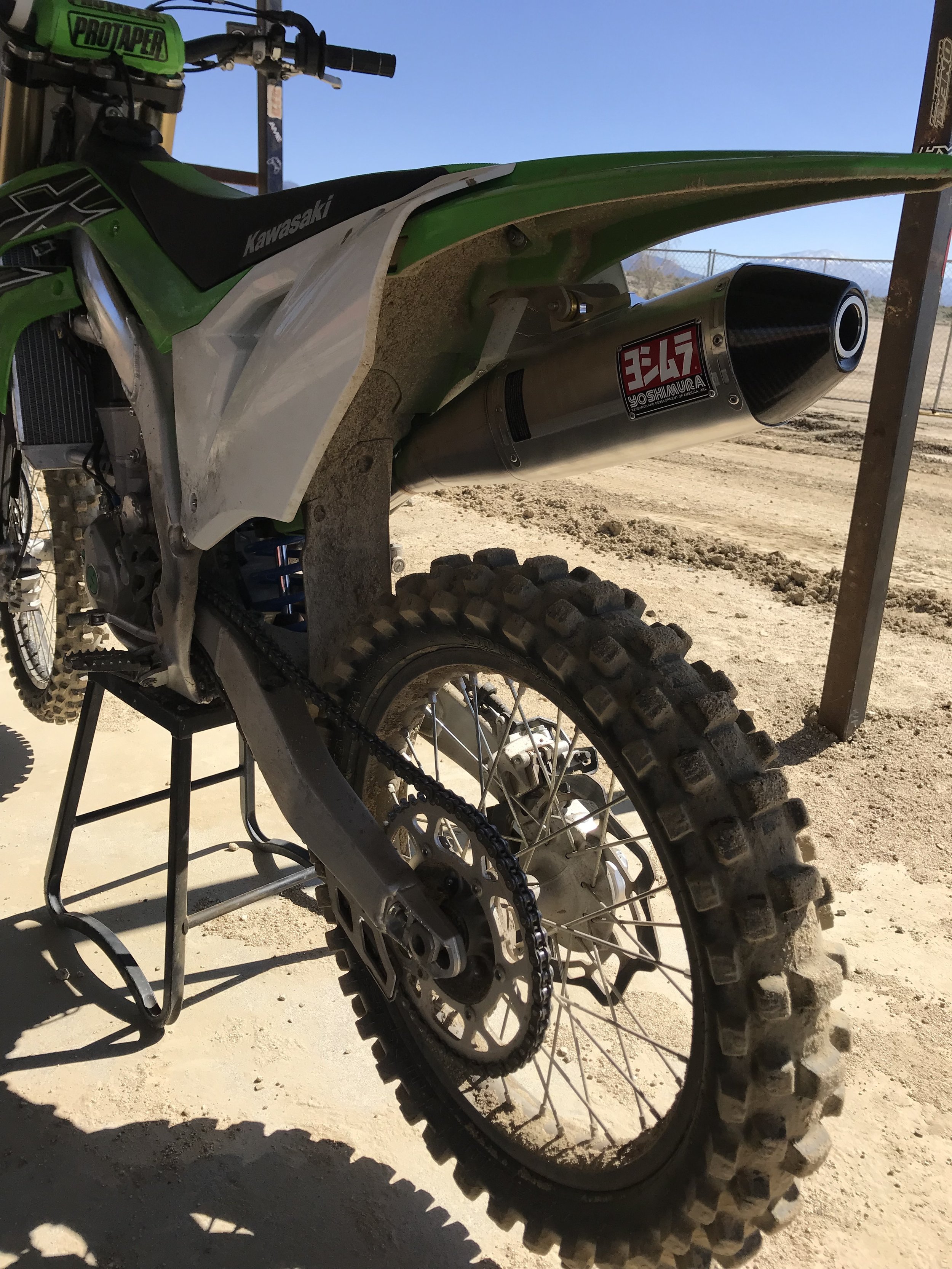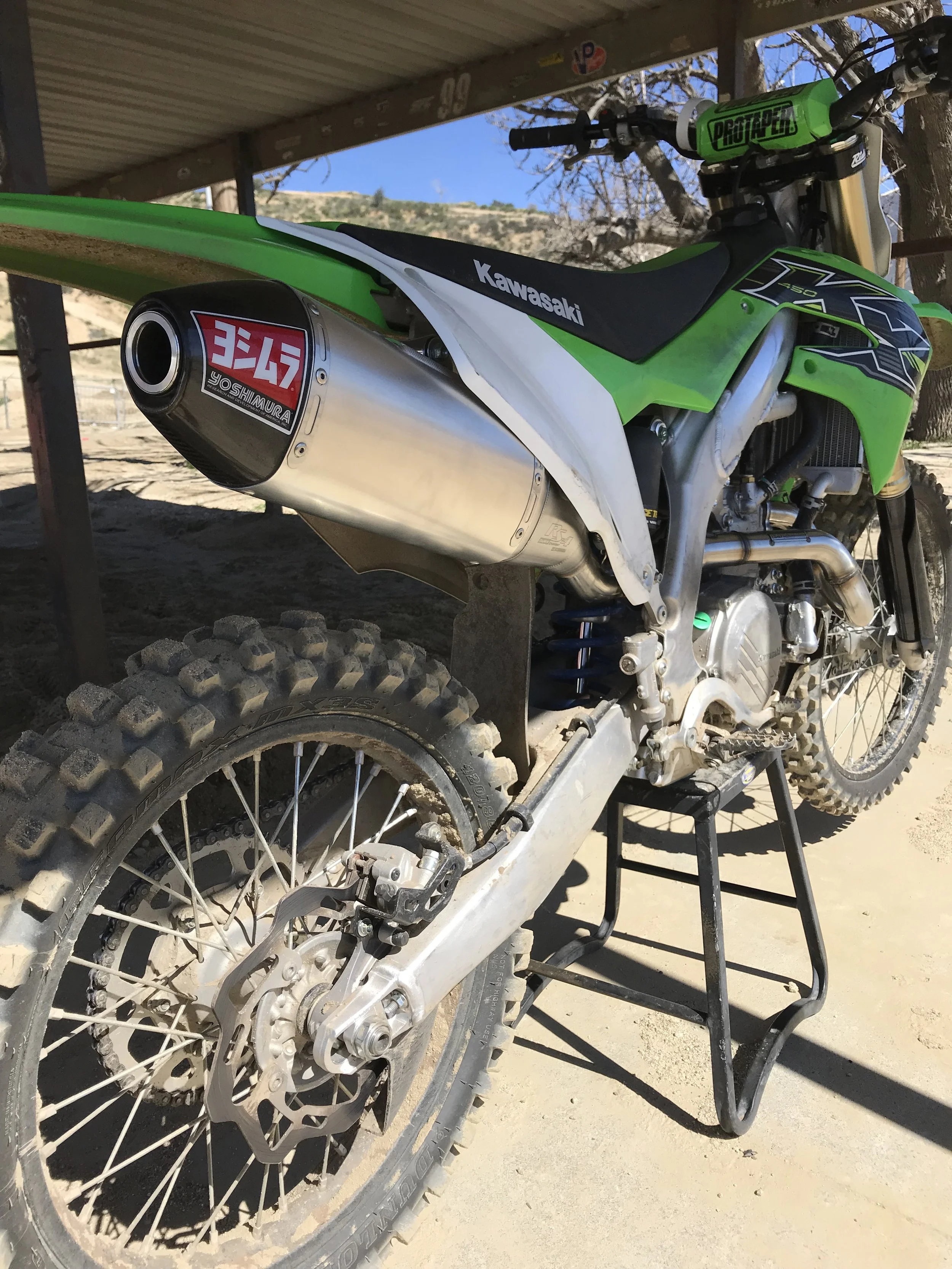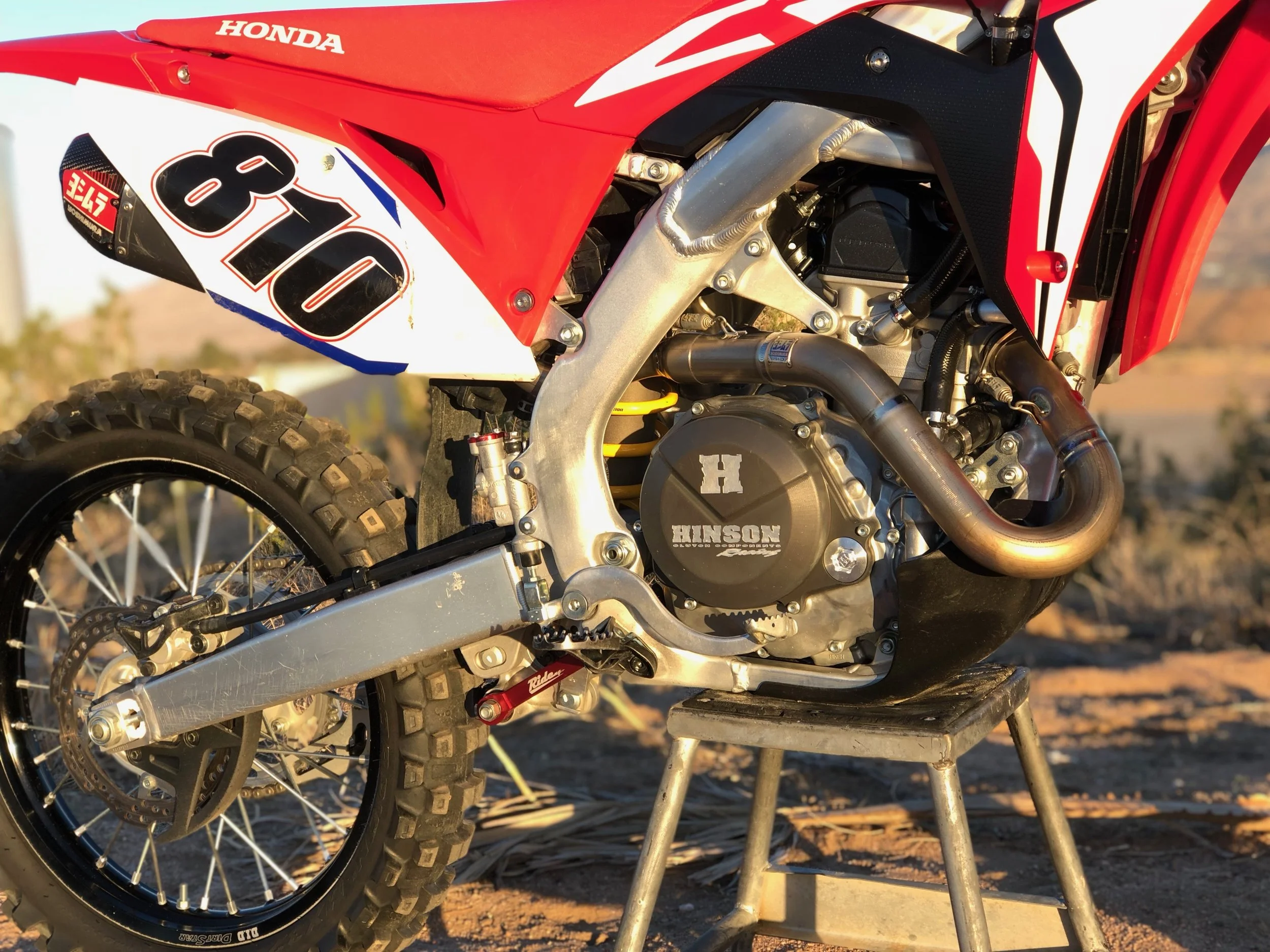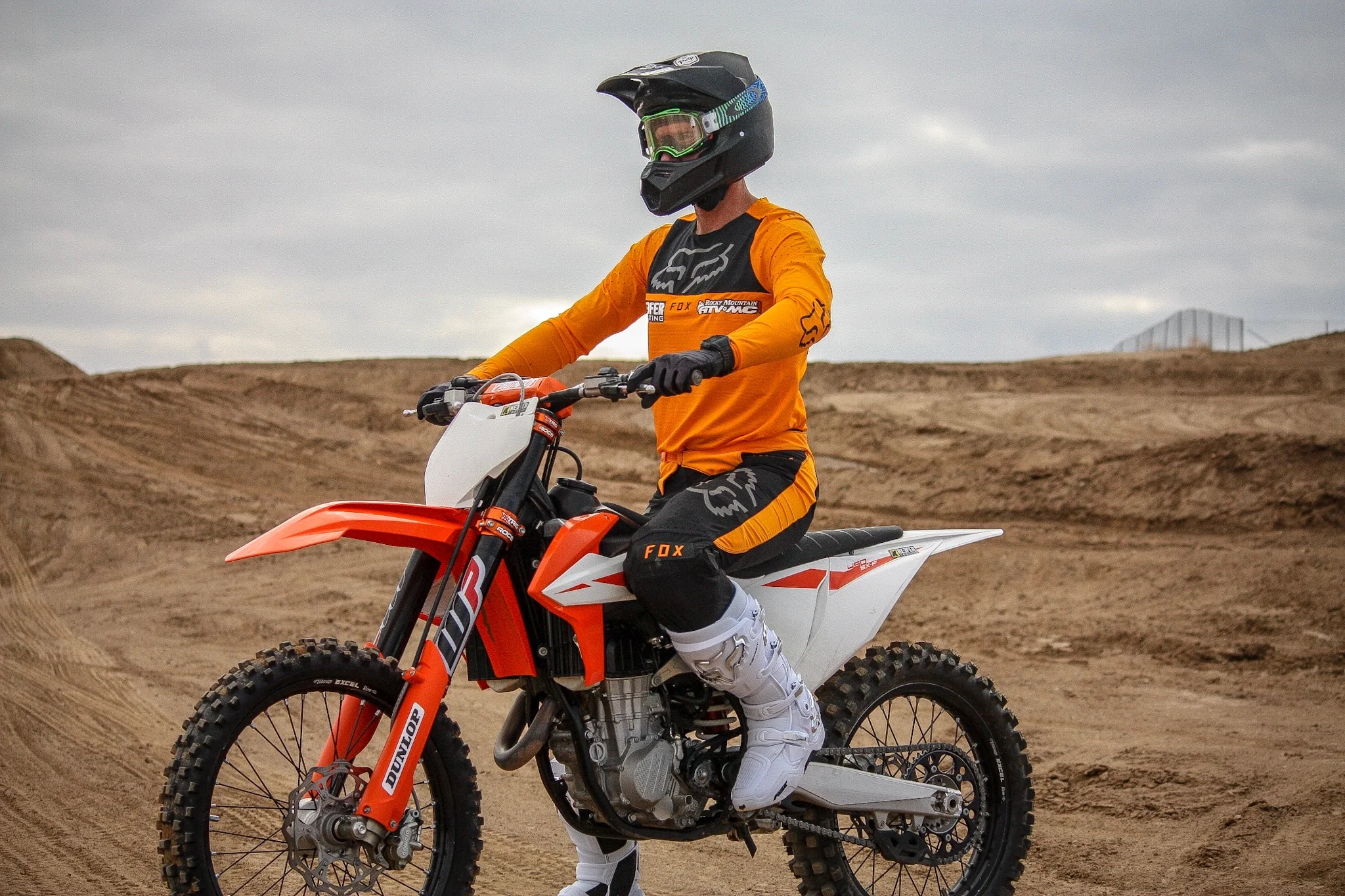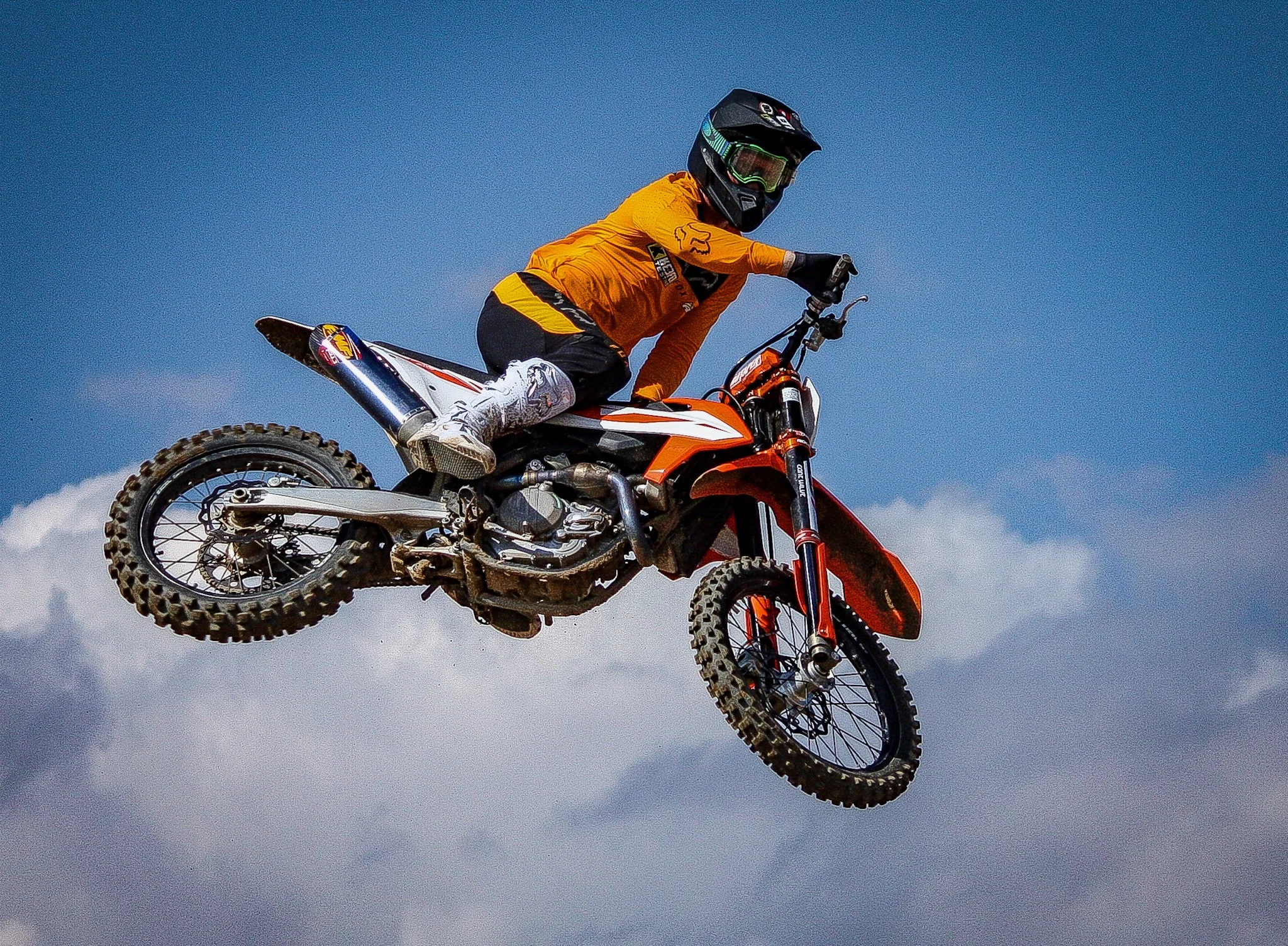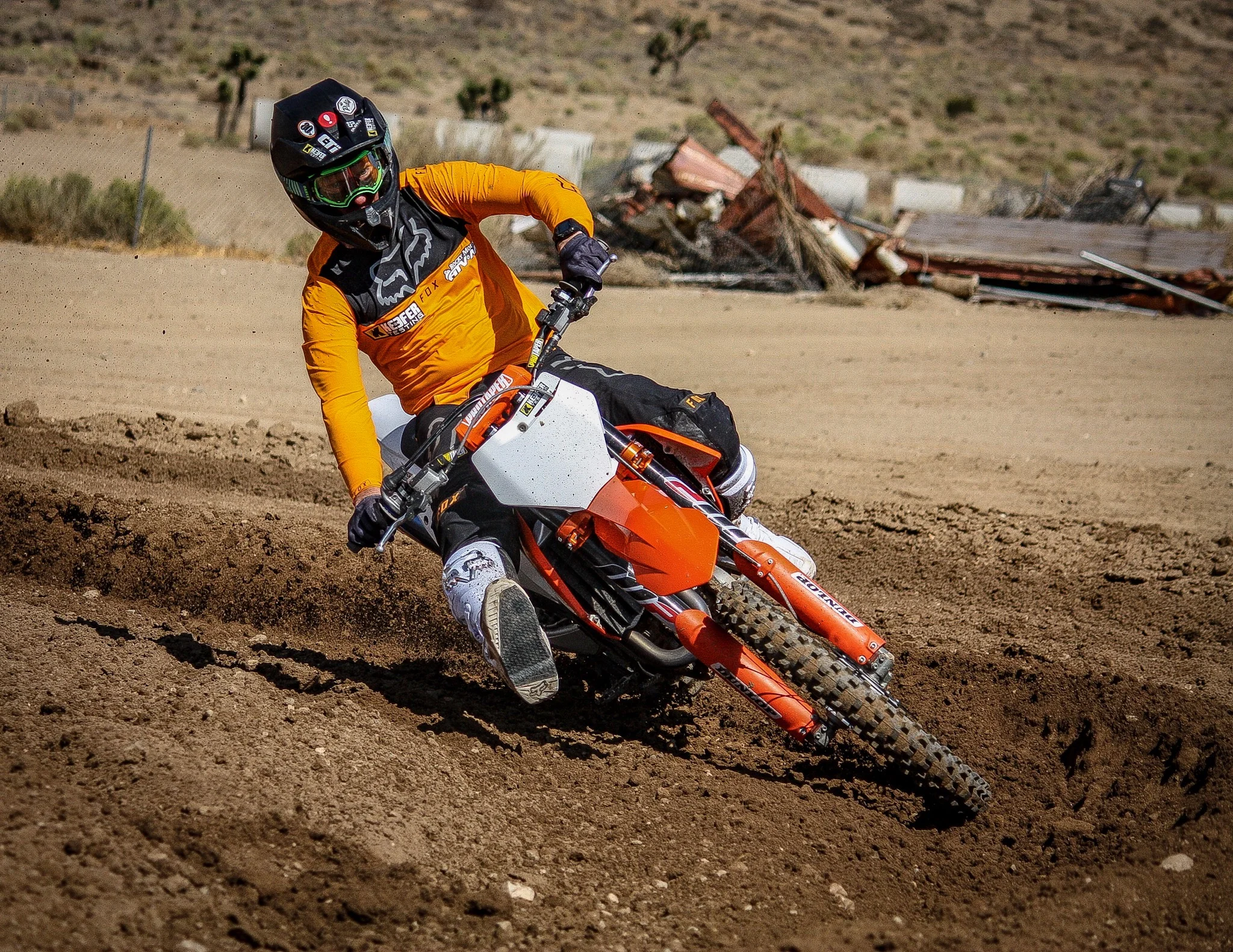FMF Vs. Pro Circuit (2020 Yamaha YZ450F Muffler Comparison)
Yamaha did a great job with the stock muffler and I bet if you ask any aftermarket muffler manufacturer they would tell you the same thing. If you’ve seen my social media pictures while riding the Yamaha YZ450F, you will see that I run the stock system quite a bit. Why? Because it’s really good! However, I know some of you out there will not keep the stock system on your bike because you may want something lighter, more attractive, and hopefully get something with more power than the stock system right? That is why I went to work and really picked apart the FMF and Pro Circuit systems for the bLU cRU machine. I do know that FMF and Pro Circuit have been working really hard on continuing to improve/evolve their systems for the YZ450F and after riding a ton on each, here are some of my findings.
Pro Circuit Ti-6 Pro Versus Stock:
Why The Ti-6 Pro? I chose the “pro” because of the smaller insert that it comes with to pass AMA/FIM sound because I have come to find out that the YZ450F loves back pressure and that smaller insert helps with throttle connection. The exhaust note on the Pro Circuit Ti-6 Pro is not near as loud or raspy sounding as the Ti-6 or T6 so that is another reason why I chose the “pro”. The exhaust note on the “pro” is deeper and slightly quieter, which I personally like more. The power delivery is slightly smoother than stock on very low RPM (4000-6000 RPM), but is only noticeable to very sensitive riders. At 10-15% throttle position there is a slightly softer RPM response, which I didn't mind on nasty, dry, choppy tracks in Southern California. If I needed more bottom on softer tracks, I simply ran a more aggressive map and that helped the “pop” I was looking for out of corners. I usually ran the TP 3.0 map with the Pro Circuit system and it made me happy with the amount of smooth roll on power I had. If you’re looking for more excitement down low and out of corners, try the “Exciting Power Character” map. (https://www.keeferinctesting.com/motocross-testing/2019/9/18/2020-yamaha-yz450f-start-upbaseline-settingstipstricks)
The rear wheel definitely feels more connected to my throttle hand and in comparison the PC system has a more seamless power delivery when transitioning to its mid range pull. The mid-range is where I could stand to get a little more power and this is exactly where the PC system delivers. The meat of the Ti-6 Pro’s power while accelerating down the next straight is noticeably better than stock. I am able to use third gear with the PC system (compared to using second gear with the stock muffler) and even though the low RPM response is slightly softer than the stock system, the mid-range RPM response is much more instant. Mid-range rpm response is crisp and makes the Yamaha feel “lighter” when trying to hop over square edge choppy areas of the track when accelerating.
I talk a lot about using third gear on a 450 and if the bike is able to pull that gear through corners. The stock YZ450F does this very good and I was worried that putting an aftermarket muffler on would hurt this feeling. The PC system only improves this as I noticed that have been able to use lower RPM’s around the track with lower lap times. I like that I feel that I can work the clutch/shifter less with the PC system.
Top end pulling power is as good as stock, but the PC Ti-6 Pro doesn’t have the over-rev the stock system has. If you learn to short shift the PC more and let that newfound mid range meat pull you around the track you will appreciate the phrase “work smarter, not harder” a lot more. I was impressed how the Pro Circuit Ti-6 Pro delivered as well as spread out its power and to me, made the Yamaha even more fun to ride. If that’s possible? For you weight watchers out there, you will lose around 1.2 pounds from the stock system and the PC Ti-6 Pro Titanium System runs $1,118.21. You can go to procircuit.com to get yours.
FMF 4.1 Versus Stock:
The FMF 4.1 muffler system has a deeper more throaty sound to it (over stock) and has a louder pitch than the stock muffler system. On the track, the FMF 4.1 (on the YZ450F) makes almost as much bottom end power delivery as the stock system and keeps that peppy/exciting RPM response. The stock system has more pulling power immediately out of corners, but the FMF 4.1 allows for better traction while rolling the throttle on when the track gets slippery. Where the FMF 4.1 system really impressed me was mid range pulling power when exiting corners. The stock system is excellent in this area, but has a heavy mid range rev feel. The FMF makes the YZ450F’s engine feel free-er and gives the rider a snappier yet more powerful mid range pull with less engine braking.
I stuck with the “TP 3.0” and “Exciting Power Character” maps on the FMF 4.1 system and that let me choose what kind of power delivery I needed at any given time of the day. With those maps and the 4.1 system you can control the power a little more down low and allow the Yamaha to have a more linear feel in second and third gear. The FMF 4.1 system has a larger muffler opening when you un-box it so make sure not to throw away your insert/spark arrestor screen that FMF includes in the box. If you think you want a little more excitement (bottom end) back into your YZ450F, simply install the insert (with the screen) and the Yamaha will get more back pressure and some more connection/bottom end pull/low rpm response, but you will lose a little of that mid range free feel that you gained.
Up on top end the FMF pulls harder than the stock system, but falls a little short when it comes to the over-rev department. The 4.1 accepts short shifting, so if you’re like me and love to get into third gear as soon as you can, the FMF does accept that third gear shift a little earlier than stock as well. I like that FMF keeps evolving their systems with each passing model year and to me the 2020 system has some added mid range pulling power that the 2019 didn’t. The FMF 4.1 Ti muffler system will save you 1.5 pounds over stock and the cost of the FMF 4.1 titanium system runs $1099.99. You can go to fmfracing.com to get yours.
Pro Circuit Vs. FMF:
Let me start off by saying that these are two muffler systems (for this model) that will rival or surpass (in spots) the stock system’s performance. That’s not easy to do! Some muffler manufacturers have better performance or have come up with a better setting for certain models and Pro Circuit as well as FMF have done a great job with their 2020 YZ450F system. The Pro Circuit has a little more throttle to rear wheel connection down on low end, but the FMF pulls stronger through the mid range. Up on top end both seem on par with each other and of course both have less over-rev than the stock muffler. I can lug the YZ450F in third gear more with the Pro Circuit muffler, but the FMF has more of a free feeling to it when higher up in the rpm range. These muffler systems are close in comparison to one another and offer the rider a different power curve than stock that is actually beneficial to the Yamaha YZ450F rider.
Results:
Bottom End Pull: Pro Circuit
Mid-Range Pull: FMF
Top End Pull: FMF/Pro Circuit
Over-Rev: Stock
Bottom End RPM Response: Stock
Mid RPM Response: Pro Circuit
Top End RPM Response: FMF
Best Looking: FMF
Stock Heat Shield Mounting: FMF, Yes/Pro Circuit, No










